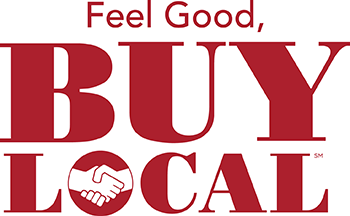
Paying Asking Price Doesn’t Mean You’ve Compromised
Share
(This article was written by Nick Murray from TC Surfski - original here)
I’ve been contemplating writing this blog post for the past few years, but have been hesitant for fear that it get’s misinterpreted. After bouncing the idea off of colleagues in the paddling business, on behalf of all those in the industry, I now feel compelled to take the chance and share my thoughts, experiences, and insights as honestly and transparently as possible.
First and foremost I want to be clear that I’m not looking for sympathy. I have been extremely lucky and blessed in life. In fact, the more history I read, and the more forward looking analysis I digest, the more I am convinced that all of us born in the past 75 years have hit the timing lottery, but that is a whole different blog…. so I won’t digress
A Little Background
I started TC SURFSKI and became an Epic and Stellar dealer in 2012. After 15 years in corporate america (12 of those with IBM, the epitome of big corporate) I felt compelled to have some level of entrepreneurial spirit in my life. I loved surfski paddling, there were no dealers or resources anywhere near Michigan, and I felt determined that Michigan and the broader Great Lakes region had to experience the joy of surfski. So without any semblance of a business plan I convinced my wife to let me take a $30,000 dollar loan against our 401k to place a couple of big surfski orders with Epic and Stellar.
I’ll never forget a discussion I had that first summer with my wife’s cousin Mike who was visiting us from Atlanta. Mike is a successful entrepreneur who had built from scratch a chain of running stores across the Southeast. He did some quick back of the napkin numbers and concluded I would need to sell upwards of 200 surfskis to net a modest middle class income of around $50,000. That was quite sobering, and thoroughly convinced me that I wouldn’t be quitting my day job anytime soon, but I still remained hopeful.
My second year in business I sold 40 surfskis and started to think that if I could keep ramping up sales this could turn into a real business. Unfortunately I came to realize that I quickly saturated my small market of innovators and early adopters and the transition to the next wave of customers would be a tough and gradual effort.
The Challenge of Selling Boats
Starting any small business is incredibly difficult and success is always far from certain, but I quickly learned that selling surfskis in the Great Lakes is not on the easier end of the spectrum. Having a “try before you buy” model meant that I had to invest in demo versions of every design across both brands. This resulted in at least 10 demo boats, several of which might only get paddled once or twice a year. These boats could no longer be sold as new and were often discounted to my cost just to recover the capital investment.
Freight is another massive challenge. It is a constant balance between buying a large enough quantity of boats (orders placed in the fall for the following spring) to get reasonable per unit freight charges versus holding less inventory and taking the risk of not being able to get the boat (most brands hold very little stock in the US) or giving up over half the margin to pay $300-$500 for a single boat delivery. Then there is the issue of freight damage, which if not caught at time of delivery, gets absorbed by the dealer. Even when it isn’t paid for by the dealer in money, it is a very time consuming process to deal with. This all assumes the manufacturer is handling the import into the US. For several of the brands, that falls onto the dealer to manage the customs process, freight brokers, duties and international shipment details. If you haven’t been through the process, it is hard to imagine the paperwork, headaches, and fees that go along with it.
Surfskis have a magical ability to generate a lot of enthusiasm and excitement. Over the years, this has led to a littered landscape of dealers who jump in hoping to sell boats and grow the sport, only to find themselves stuck with expensive inventory at the end of the season. This inevitably leads to heavy discounting which sustainable dealers can’t compete with. You could argue the manufacturers should be more discerning and I know they try, but the reality is that they are struggling as well and it is hard to turn down a big order.
Beyond freight and discounting dealers, when you add credit card fees, and the new tariff charges (some of which are now being absorbed into dealer margins), you realize that the average net margin on surfskis may be as low as 10-20%. Its hard to build a business on this, so in order to remain viable you have to diversify. In my own case I’ve added on-line sales, lessons, race rentals, and the once a year Immersion.
Revenue Stream Diversification is Critical
Unlike bikes, there aren’t many accessories, replacement parts, or on-going maintenance requirements for surfskis. That said, there are some great new clothing and accessory brands that have launched over the past few years which have helped to add an incremental revenue stream for many. Shipping product from Australia and South Africa is not cheap, so again inventory planning and management is critical. Selling on-line allows you to reach a much broader market, but also comes with high consumer expectations set by Amazon for free and quick shipping and returns.
Many successful dealers have found ways to build an additional revenue stream through lessons, coaching, and rentals. The plastic boats make rentals feasible, but in my own experience they are still quite challenging and it is always a bit nerve racking to put a surfski into the hands of a complete novice. Lessons and coaching can work well, the challenge of course is getting to a price point that makes it worthwhile. Not having the celebrity status of mainstream professional athletes, even the best in the world struggle to charge a rate sufficient to make any real money.
Marketing and Promotion
There are many things to love about surfski still being a niche sport. Even the biggest players in the market are still very small and accessible. There aren’t many industries where you can send an e-mail directly to the designer/engineer/owner of a product and expect to get a detailed response and on-going collaboration. However, the downside is that the manufacturers don’t have the capital and budgets to run large scale marketing and brand awareness campaigns. Epic Kayaks is viewed as the dominant player in the industry, but if I had to guess, their marketing budget is probably 1% that of the major SUP brands. For the dealer trying to introduce a new sport into a region, this results in a lot of heavy lifting and a significant amount of money spent trying to discover where marketing dollars will provide a return on investment.
A Brief Look at TC SURFSKI Financials
Combining boat sales, on-line sales, rentals, and lessons, my gross revenue over the past 7 years has been in the range of 90 – 130k. I’ve had an equal mix of years where I’ve been in the red and in the black. In a great year where I’ve done a good job managing inventory, I should net in the range of 7-12k. On average I spend about 12-15 hours per week (evenings and weekends) writing blogs, recording podcasts, maintaining my website, writing my newsletter, managing social media, packing/shipping orders, meeting with customers, giving lessons, managing financials, and responding to e-mails. Doing some basic math my hourly income lands somewhere between $11 and $19 dollars an hour, and that is on a great year.
Pricing Psychology
If the surfski industry could collectively make one wish, it might be to reset pricing across the board. Likely due to the honest nature of the community, surfski pricing has never been over inflated to accommodate large margins that would provide for all sorts of creative discounting (think furniture industry). But the reality is that we now live in a discount world, and to most, paying the actual retail price is at best compromising or losing the competition, and at worst completely unacceptable. This no doubt creates challenges for all types of businesses with fair retail pricing.
Value is more than Price
In my day job I work with procurement teams in very large organizations. As we develop their strategies a common theme is always to recognize that value is about much more than purchase price. I believe the same holds true for consumers buying large ticket recreational items. When you buy from a local dealer and pay the asking price you are getting much more than just the boat, paddle, and accessories. You are helping to support everything they’ve done to bring the sport to life in your community and everything they will continue to do to support you on your journey and that of the community at large. A purchase from your local dealer should always be viewed as the starting point in a long term relationship where value is measured over years. The same can be said for coaching, lessons, clinics, and races.
No Regrets
In the past seven years what I haven’t gained financially I have made up for in many other ways. I’ve been given the chance to share my passion, gain an education and perspective only possible by running a small business, and cultivate a global network of the most talented, humble, like minded, and inspiring people I could ever imagine. The biggest sacrifice is that made by my family for tolerating my evening and weekend time commitments.
I also want to reiterate that I’m not judging anyone, and want to be clear that I was that person looking for a discount, and feeling that I compromised when paying list price. Running TC SURFSKI for 7 years has created a perspective and level of awareness that I didn’t have before, but even so, I am still far from perfect in making buying decisions. We all have a default nature that plays a big part in how we buy things. Buying is an emotional experience and we are all human, so at a certain level there will always be nuance and inconsistency. That said, I believe there is a super simple question we can ask ourselves to ensure we do better in making our purchase decisions.
The Simple Question to Ask:
First ask yourself, am I buying something from a business with a millionaire CEO? If yes, then by all means, negotiate with everything you’ve got. If no, and you’re buying from a small business owner supporting a family and living a modest lifestyle, save your negotiating energy, and feel great paying the asking price. I can guarantee you that every dealer, coach, race director, small manufacturer, and delivery driver will sincerely appreciate it, and they will remember you for it!
